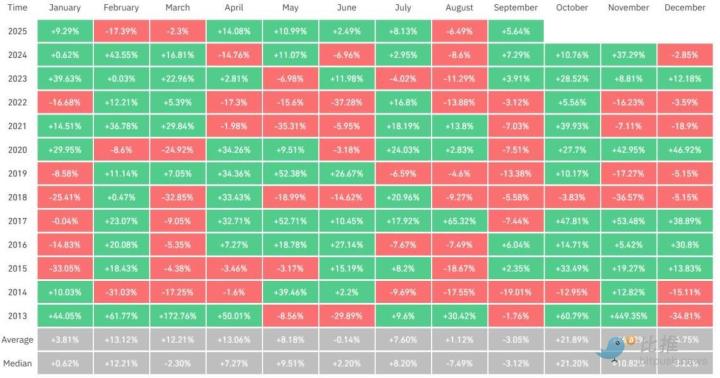A whale from HTX caused a chain reaction with a large withdrawal.
Original Article:Why ETH's Unstaking Queue Has Suddenly Swelled (Galaxy)
Author:Lucas Tcheyan, Galaxy
Translated by:Golem, Odaily
Cover:Photo by Shubham Dhage on Unsplash
Starting from July 16, the number of ETH unstaking requests dramatically increased, with the number of validators exiting the queue surging from 1,920 to over 475,000 by July 22, and the waiting time extending from less than an hour to over eight days. Although the increase in unstaking activity was somewhat expected due to ETH's recent strong price performance and recent adjustments to validator staking requirements in the ETH Pectra upgrade, the sudden spike was primarily driven by the surge in ETH lending rates starting from July 16. The rate surge triggered widespread liquidation of ETH circular lending strategies, which in turn intensified the decoupling pressure on ETH-based liquidity staking and restaking tokens (LST and LRT).

Ethereum Staking Queue
Ethereum's staking exit queue is an built-in mechanism designed to manage validators' orderly withdrawal of staked funds from the network. To maintain network stability and prevent large-scale validator exits from compromising consensus, Ethereum limits the number of validators that can exit in each epoch. This limit, called the churn limit, varies with the total number of active validators, allowing approximately 8 to 10 validators to exit per epoch (about every 6.4 minutes). When validators initiate a voluntary exit, they enter the queue and must wait for their turn to be processed. After exiting, they must wait a period of time (about 27 hours) before funds can be withdrawn. During periods of high exit demand, the queue can become severely congested, leading to waiting times of several days or even weeks.
This is not the first time Ethereum has experienced an unstaking backlog. In January 2024, when the bankrupt crypto lending institution Celsius was restructuring, it needed to withdraw 550,000 ETH, with waiting times extending to six days.
ETH Circular Lending Strategies Fail Due to Lending Rate Surge
Starting from July 14, ETH lending rates on the Aave DeFi protocol began to periodically surge. While lending rates typically range between 2% to 3%, on July 16, 18, and 21, the rates spiked to 18%. The dramatic fluctuation was caused by a sharp decrease in ETH supply on the Aave platform, which originated from a wallet associated with HTX exchange making large withdrawals. Since June 18, this wallet has withdrawn over 167,000 ETH. The sudden reduction in ETH deposits put pressure on users running ETH circular lending strategies on Aave and led to a surge in redemption requests.
Circular lending strategy is a widely used method by crypto traders to enhance ETH staking yields. Typically, users deposit liquidity staking tokens (LST) or liquidity restaking tokens (LRT) as collateral on platforms like Aave, borrow ETH, convert it back to LST, and redeposit, repeatedly building leverage exposure. The strategy becomes profitable when staking yields exceed ETH lending rates, allowing users to earn the interest spread. This strategy can be executed manually or through automated vaults provided by protocols like EtherFi and Instadapp.

However, after the ETH supply tightening began on July 16, the spread between staking yields and ETH lending costs turned negative. By July 21, the spread had dropped to -2.25%, rendering the strategy unprofitable. This triggered collective liquidation by traders, with users withdrawing their ETH, repaying loans, and gradually reducing leverage positions. Since many traders used LST or LRT as collateral, they needed to convert these assets back to ETH or remove collateral. This further pressured the LST/LRT secondary market and the Ethereum validator exit queue.

As lending rates rise, LST and LRT are beginning to further decouple from ETH. LST/LRTs are typically traded at a slightly lower price than ETH to compensate for redemption delays caused by the Ethereum exit queue, limited DEX liquidity, and protocol-specific risks (such as slashing or smart contract risks). During forced deleveraging or redemption, this selling pressure will further push LST/LRT prices below par value. Additionally, automatic revolving vaults react differently to interruptions. Some vaults choose to unwind collateral, while others directly sell on the secondary market. For example, as of today, EtherFi's Liquid strategy has about 20,000 ETH in the Ethereum exit queue.
Further exacerbating the queue congestion is that some market participants are beginning to arbitrage the LST/LRT decoupling. By purchasing LST/LRT at a discounted price in the secondary market and redeeming them for the full ETH value, they can earn the spread between the two. This has led to a surge in ETH exit queue requests.
Staking and Validator Queue Demand Heats Up
The surge in redemption requests is offset by an increase in new collateral demand. Since June, ETH staking requests and the queue length for becoming a validator have risen to the highest level since April 2024.

This is due to ETH's recent outperformance of Bitcoin, and the establishment of multiple digital asset financial companies (DATCO) that have purchased over $2.5 billion in ETH in recent months, thereby sparking enthusiasm for ETH.
Outlook
While initial data on unstaked ETH might suggest a wave of profit-taking, a closer look reveals that most activity is driven by fluctuations in the ETH lending market and the significant rise in lending rates since July 16th. Meanwhile, new staking demand remains strong, almost offsetting ongoing withdrawals, and investors need not panic.
Despite the increased demand, ETH's staking architecture continues to operate as expected. While some may complain about significantly increased queue times, this is a feature of the network, not a flaw. It is designed to limit the speed of validators entering or exiting, thereby protecting the stability and security of Ethereum's Proof of Stake (PoS) consensus mechanism.
However, this event highlights the ongoing fragility of the ETH liquidity staking and restaking ecosystem. These assets remain sensitive to leverage strategies and are prone to stress under extreme market conditions. The widespread impact of LST/LRT decoupling and redemption delays reinforces the importance of considering term risk and liquidity bottlenecks.
Looking forward, protocols relying solely on Ethereum's native exit mechanism may face more stringent scrutiny. We anticipate growing interest in solutions that improve redemption flexibility, such as peer-to-peer exit markets, improved LST/LRT automated market makers (AMMs), and protocol-native liquidity vaults aimed at alleviating exit queue congestion and smoothing capital flows.
Disclaimer: As a blockchain information platform, the articles published on this site represent only the personal views of the authors and guests, and are unrelated to Web3Caff's stance. The information in the article is for reference only and does not constitute any investment advice or offer. Please comply with the relevant laws and regulations of your country or region.






